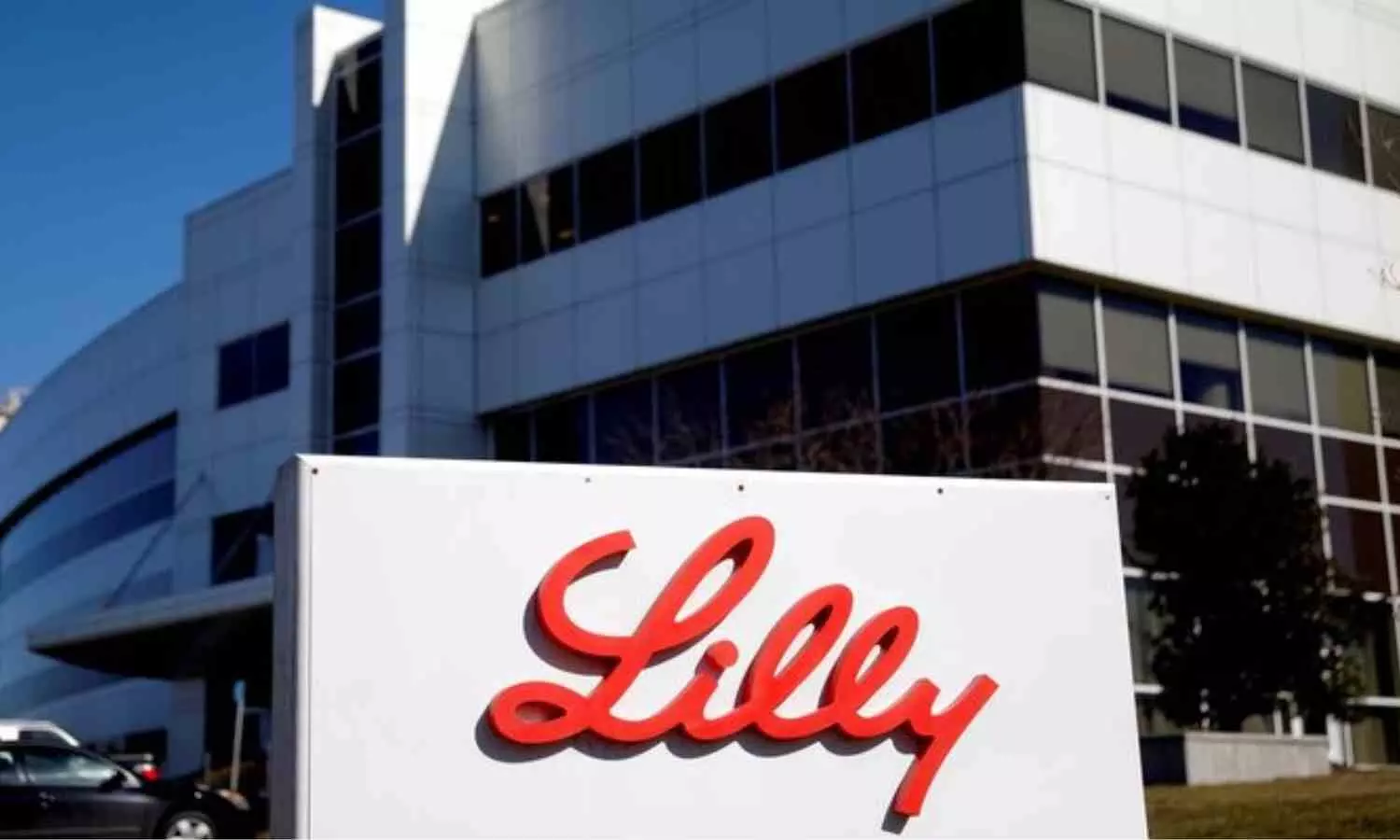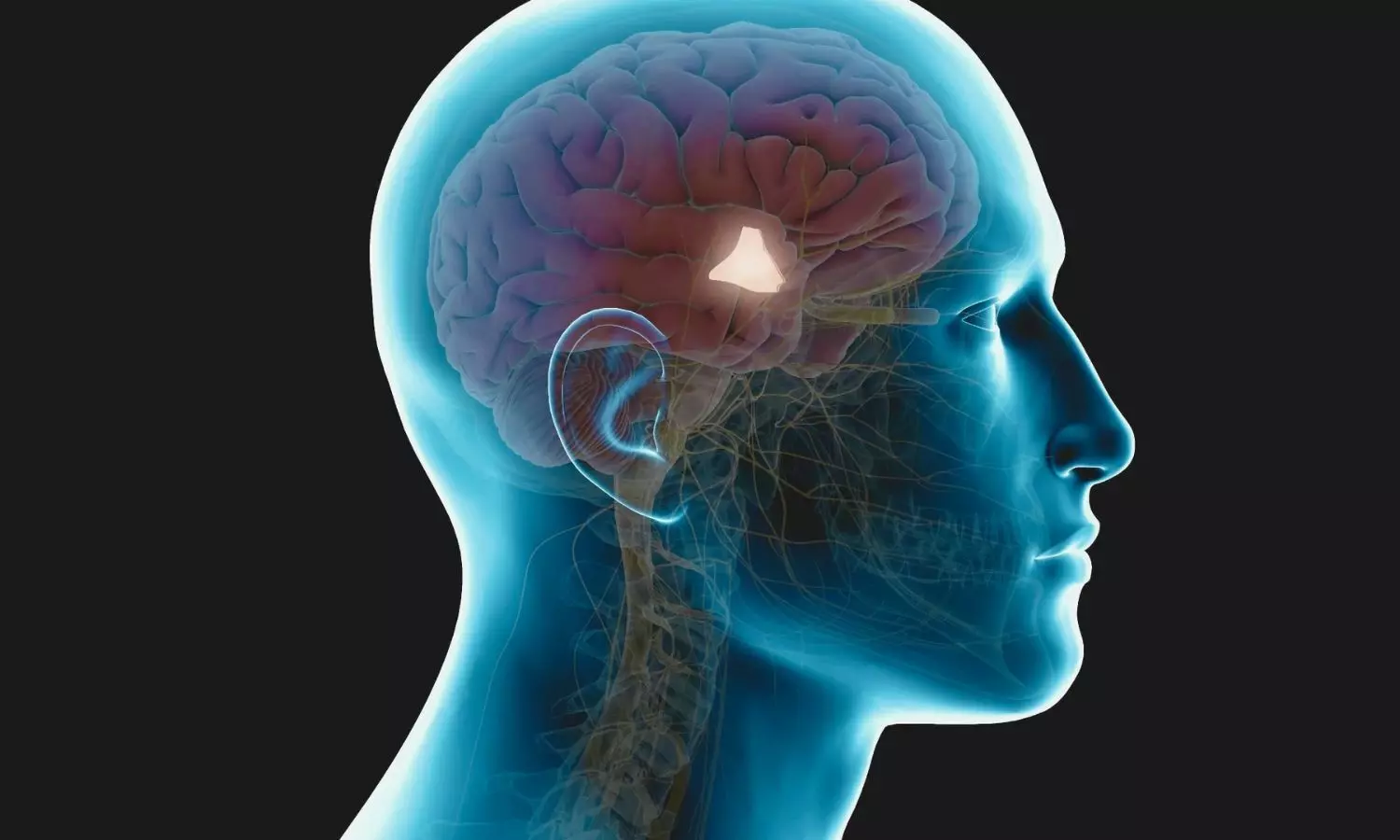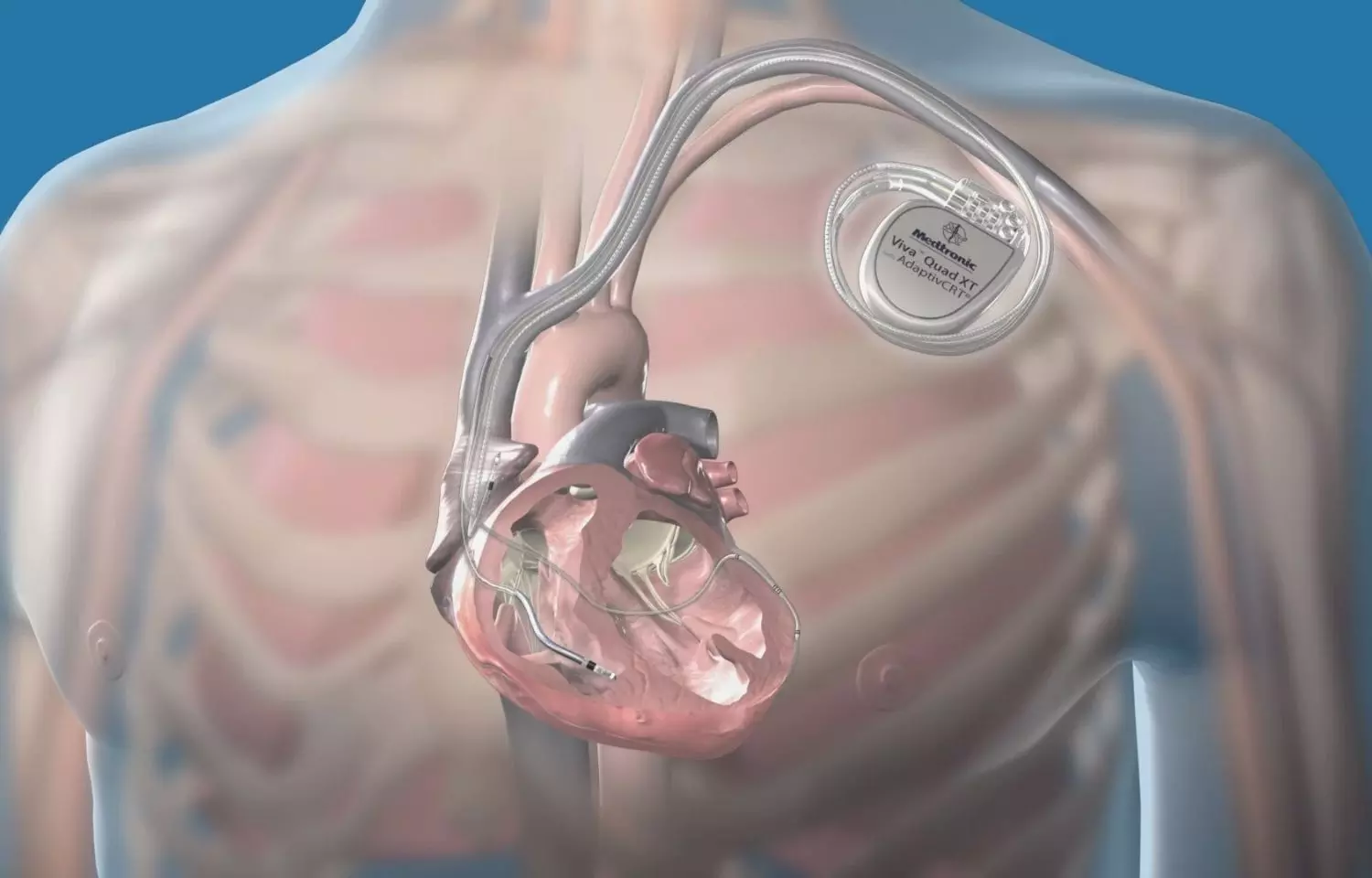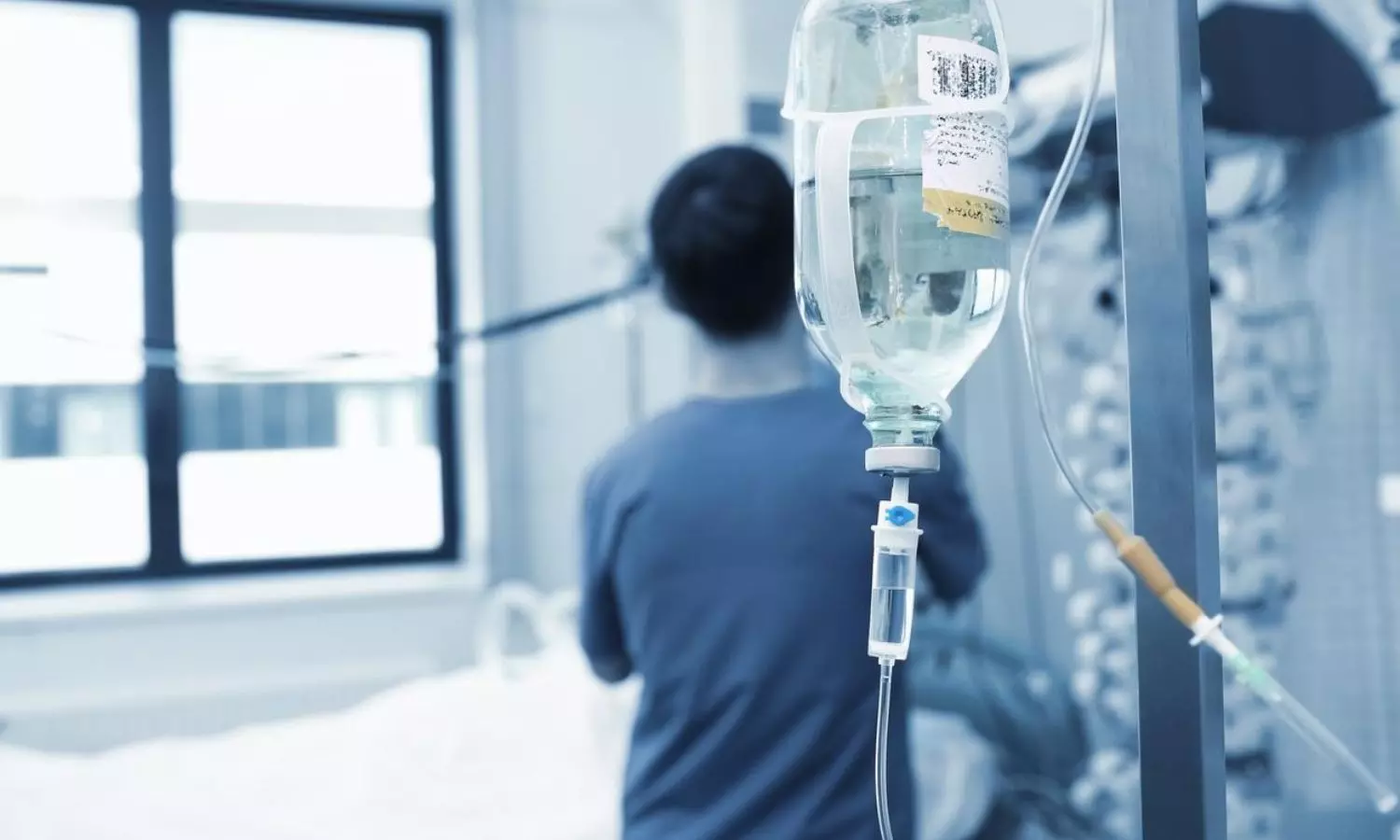Highly accurate AI model can estimate lung function just by using chest X-rays
Powered by WPeMatico
Powered by WPeMatico
Powered by WPeMatico
Powered by WPeMatico
Powered by WPeMatico

Indianapolis:
“Oral therapies could open up new possibilities for earlier intervention in diseases like ulcerative colitis, and also provide the potential for combination therapy to help patients with more severe disease,” said
“
Lilly will commence a tender offer to acquire all outstanding shares of Morphic for a purchase price of $57 per share in cash (an aggregate of approximately $3.2 billion) payable at closing. The transaction has been approved by the boards of directors of both companies.
The transaction is not subject to any financing condition and is expected to close in the third quarter of 2024, subject to customary closing conditions, including the tender of a majority of the outstanding shares of
The purchase price payable at closing represents a premium of approximately 79.0% to the closing stock price on
Lilly will determine the accounting treatment of this transaction as a business combination or an asset acquisition, including any related acquired in-process research and development charges, according to Generally Accepted Accounting Principles (GAAP) upon closing. This transaction will thereafter be reflected in Lilly’s financial results and financial guidance.
For Lilly, Citi is acting as exclusive financial advisor and Kirkland & Ellis LLP is acting as legal counsel. For Morphic, Centerview Partners LLC is acting as exclusive financial advisor.
Powered by WPeMatico

Mumbai: A 40-year-old senior doctor from Tata Hospital filed a First Information Report (FIR) at Bhoiwada police station after he allegedly fell victim to a gift parcel scam losing Rs 8.13 lakh to fraudsters.
According to the police, the doctor lost his money periodically but realised that he was cheated when the fraudsters demanded Rs 10 lakh in relation to the scam.
The alleged fraud took place when the doctor received a friend request from a woman on social media on May 5, this year. The woman claimed herself as Paisley Macias. Initially, the doctor accepted the woman’s friend request. Following this, they exchanged WhatsApp numbers.
Also read- Faridabad Homeopathic Doctor Arrested For Practicing Allopathy Medicine For 35 Years
When the duo started talking on WhatsApp, the woman claimed herself to be working with the American Army and stationed in Ukraine. Then the woman informed the doctor on May 11 that she was sending him a gift containing approximately 2,825 US dollars and shared the image of the gift packet on WhatsApp. She then informed him that the parcel would arrive on May 13.
As per a TOI news report, the doctor on May 13 was contacted by a woman who identified herself as a Customs official at Mumbai International Airport. She informed him that a package from Ukraine had been delivered in his name and that he was required to pay 450 US dollars (Rs 37,500 approx). The doctor paid the amount.
The demands didn’t stop there; the doctor few days later received another call from a woman asking him to pay ₹87,500 as a money laundering clearance charge following which the doctor paid the amount in a bank account provided by the woman.
A police officer working in this case told HT, “He received a call from a woman posing as a customs official at Mumbai Airport, who asked him to deposit ₹37,500 to receive his parcel. Later, he was asked to pay Rs 87,500 as a money laundering clearance charge. She then informed him that the parcel would be sent to the Reserve Bank of India (RBI) for the US dollars to be converted into Indian currency and deposited into his bank account.”
To make the scam more convincing, the doctor received an email from an address resembling the RBI’s, asking for ₹1.88 lakh as a currency exchange charge and an additional ₹5 lakh as a transfer cost.
However, the doctor realised the scam and approached the police when the fraudsters demanded Rs 10 lakh. Accordingly, he filed a complaint against the unknown fraudsters and a case has been registered in this regard.
“They kept asking him to pay more, claiming each time it was the last charge, and that he had already paid so much that if he didn’t pay now, all his money would be lost. The woman, posing as a US Army officer, also assured him that the parcel contained a lot of money, which would solve his problems once received,” the police officer added.
Also read- Kerala Doctor Loses Rs 7.65 Crore In Stock Market Investment Scam, 3 Arrested
Powered by WPeMatico

Spain: Recent research has shed light on promising findings regarding the impact of bariatric surgery on hypothalamic inflammation and its correlation with short-term weight loss outcomes in adults, irrespective of their type 2 diabetes (T2D) status. The hypothalamus, a crucial region in the brain responsible for regulating hunger and metabolism, has been increasingly recognized for its role in obesity and related metabolic disorders.
The findings, published in Diabetes Care, suggest hypothalamic inflammation (HI) improvement after bariatric surgery (BS) and may support a role for HI in modulating the weight response to these interventions.
Preclinical studies have linked hypothalamic inflammation to the pathophysiology of obesity and type 2 diabetes. Yet, further research is needed to clarify its significance in disease development and assess its potential for reversal. Considering this, Amanda Jiménez, Endocrinology and Nutrition Department, Hospital Clínic, Barcelona, Spain, and colleagues sought to evaluate the effect of bariatric surgery on radiological HI biomarkers and the association between the severity of such radiological alterations and post-BS WL trajectories. They also explored the utility of cerebrospinal fluid large extracellular vesicles (CSF-lEVs) enriched for microglial and astrocyte markers in studying HI.
The researchers included 72 individuals with obesity (20 with and 52 without type 2 diabetes) and 24 control individuals. Participants underwent lumbar puncture and underwent a 3-T MRI at baseline and again at 1-year post-bariatric surgery. The research team assessed hypothalamic mean diffusivity (MD) (higher values indicate lesser microstructural integrity) and the volume of the whole and main hypothalamic subregions. Flow cytometry determined CSF-lEVs enriched for astrocyte and glial markers.
The study led to the following findings:
“This study proposes that individuals with obesity and type 2 diabetes exhibit hypothalamic inflammation, which could influence the weight-loss outcomes observed after undergoing bariatric surgery,” the researchers wrote.
In conclusion, the study underscores the dual benefits of bariatric surgery in reducing hypothalamic inflammation and predicting short-term weight loss outcomes. These findings advance understanding of the neurobiological mechanisms underlying obesity and also offer potential avenues for personalized treatment strategies aimed at improving metabolic health in adults with or without type 2 diabetes.
Reference:
Adriana Pané, Laura Videla, Àngels Calvet, Judith Viaplana, Lídia Vaqué-Alcázar, Ainitze Ibarzabal, Mateus Rozalem-Aranha, Jordi Pegueroles, Violeta Moize, Josep Vidal, Emilio Ortega, Isabel Barroeta, Valle Camacho, Gemma Chiva-Blanch, Juan Fortea, Amanda Jiménez; Hypothalamic Inflammation Improves Through Bariatric Surgery, and Hypothalamic Volume Predicts Short-Term Weight Loss Response in Adults With or Without Type 2 Diabetes. Diabetes Care 20 June 2024; 47 (7): 1162–1170. https://doi.org/10.2337/dc23-2213
Powered by WPeMatico

New Delhi: Fortis Healthcare Limited appointed Prem Kumar Nair as the Vice-Chairman of the board of the company on Friday.
According to a PTI report, the company’s board has approved the appointment of Nair as the Vice-Chairman of the board of the company, Fortis Healthcare said in a regulatory filing.
He was appointed Group Chief Executive Officer of IHH Healthcare on October 1, 2023.
Also Read:Gleneagles Healthcare rebrands hospital chain as ‘Gleneagles Hospitals’
The company’s board also recommended the re-appointment of Ashutosh Raghuvanshi as the Managing Director for a period of two years effective from March 19, 2025, the healthcare major said, news agency PTI reported.
IHH Healthcare had pipped rival Manipal-TPG combine in the race to acquire Fortis Healthcare.
Medical Dialogues team had earlier reported that Fortis Healthcare plans to invest up to Rs 1,300 crore in expanding capacities at its existing hospitals over the next few years, according to a senior company executive. The healthcare provider aims to add approximately 2,200 beds during this period.
“So, some of the capex has already been incurred in that (addition of bed capacity).
“Additional capex will be somewhere around Rs 1,200 crore to Rs 1,300 crore, which includes equipment also, everything put together,” Fortis Healthcare CFO Vivek Goyal said in an analyst call.
Powered by WPeMatico

Researchers in a recent study have found that implantable cardioverter-defibrillators (ICDs) continue to offer a significant mortality benefit for patients with a primary prevention (PP) indication in heart failure management. The study was published in the journal JACC: Clinical Electrophysiology conducted by Aamir Ahmed and colleagues. This study reaffirms the life-saving potential of ICDs, consistent with earlier clinical trials.
Previous clinical trials established the efficacy of ICDs in reducing sudden cardiac death among high-risk patients. However, since those studies, there have been notable advancements in heart failure (HF) treatment and ICD technology, necessitating an updated evaluation of ICD benefits.
The primary aim of this study was to compare mortality rates between patients with a primary prevention indication for an ICD who received the device and those who did not, using contemporary real-world data. The study analyzed data from a large electronic health record database of U.S. patients between 2012 and 2020. Included patients had a PP indication for ICD and survived at least one year post-indication.
The study findings were as follows:
A total of 25,296 patients met the inclusion criteria. Among them, 2,118 (8.4%) received an ICD within a year of indication.
The treated group was younger (average age 63.4 years) compared to the non-treated group (average age 66.1 years) and had a smaller proportion of women (25.0% vs 36.7%).
After adjusting for clinical characteristics through 4-to-1 propensity matching, the study employed a Cox proportional hazard model to estimate the impact of ICD treatment on mortality.
Patients treated with an ICD had a 24.3% lower risk of all-cause mortality compared to those who did not receive the device (HR: 0.757; 95% CI: 0.678-0.835; P < 0.001).
There was no significant difference in ICD benefit between patients with ischemic and nonischemic heart disease (P = 0.50).
The absence of differential benefit between ischemic and nonischemic heart disease patients suggests a broad applicability of ICDs across different heart failure etiologies. ICD therapy for patients with a primary prevention indication is associated with a significant reduction in all-cause mortality.
Reference:
Ahmed, A., Auricchio, A., Mittal, S., Pickett, R. A., Wilkoff, B. L., Jacobsen, L. D., Marti, A. K., Holbrook, R. W., Soderlund, D. M., & Curtis, A. B. (2024). Mortality benefit among primary prevention implantable cardioverter-defibrillator recipients on contemporary heart failure treatment. JACC. Clinical Electrophysiology, 10(5), 916–926. https://doi.org/10.1016/j.jacep.2024.102334
Powered by WPeMatico

USA: A retrospective study of hospitalized patients in the United States diagnosed with gram-negative bloodstream infections (GN-BSIs) indicates that extended-infusion beta-lactam (EI-BL) antibiotic therapy could offer advantages for individuals experiencing severe illness or infection with non-susceptible organisms.
EI-BL therapy was associated with lower mortality in patients with severe illness and antibiotic minimum inhibitory concentrations in the intermediate range to the β-lactam agent administered for treatment, researchers reported in JAMA Network Open. Due to adverse events in the EI-BL group, there were increased odds of antibiotic discontinuation and catheter complications, and antibiotic resistance emergence was similar in the EI-BL and intermittent infusion β-lactam groups.
Gram-negative bloodstream infections pose a serious threat in hospital settings due to their resistance to multiple antibiotics, complicating treatment, and increasing mortality rates. Traditional intermittent β-lactam therapy, where antibiotics are administered over short periods, has been the standard approach. However, concerns over its efficacy in achieving optimal drug concentrations at the infection site have prompted researchers to explore extended-infusion therapy.
Against the above background, Sara M. Karaba, Department of Medicine, Division of Infectious Diseases, Johns Hopkins University School of Medicine, Baltimore, Maryland, and colleagues aimed to investigate the association of EI-BL therapy with adverse events, survival, and emergence of antibiotic resistance in adults with gram-negative bloodstream infections.
For this purpose, the researchers conducted a cohort study of consecutive adults with GN-BSI admitted to 24 US hospitals between January 1, 2019, and December 31, 2019. They were compared with adults with GN-BSI receiving the same agents as intermittent infusion β-lactam (II-BL; ≤1-hour infusions).
The groups receiving extended-infusion beta-lactam (EI-BL) and intermittent-infusion beta-lactam (II-BL) underwent 1:3 nearest-neighbor propensity score matching (PSM) without replacement. Multivariable regression was applied to the PSM cohort to examine outcomes, all censored at day 90.
The primary outcome was mortality; secondary outcomes included antibiotic adverse events and resistance emergence (≥4-fold increase in the minimum inhibitory concentration of the β-lactam used to treat the index GN-BSI).
The following were the key findings of the study:
In conclusion, EI-BL therapy is associated with decreased mortality for patients with severe illness or those infected with nonsusceptible organisms in the cohort study of patients with GN-BSI; there is no clarity on the potential advantages in other groups, and need to be balanced with potential adverse events.
Further investigation is warranted in a larger cohort to examine the subsequent development of resistance, the researchers suggested.
Reference:
Karaba SM, Cosgrove SE, Lee JH, et al. Extended-Infusion β-Lactam Therapy, Mortality, and Subsequent Antibiotic Resistance Among Hospitalized Adults With Gram-Negative Bloodstream Infections. JAMA Netw Open. 2024;7(7):e2418234. doi:10.1001/jamanetworkopen.2024.18234
Powered by WPeMatico
